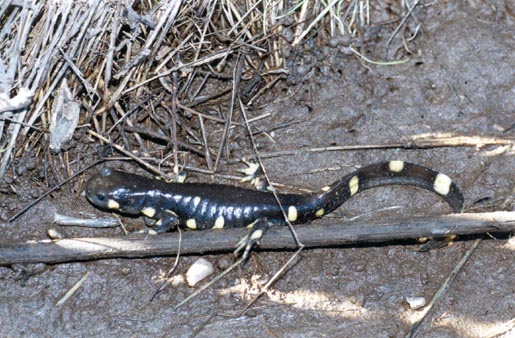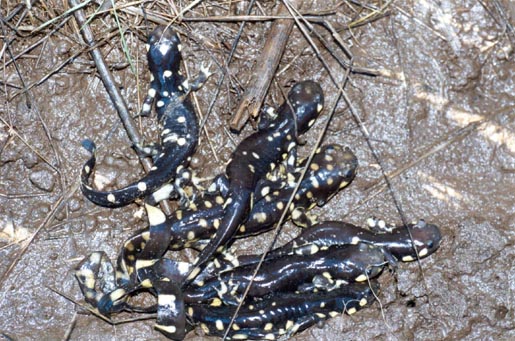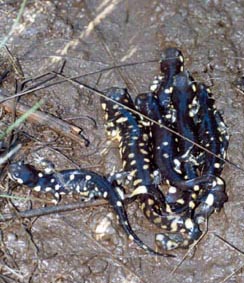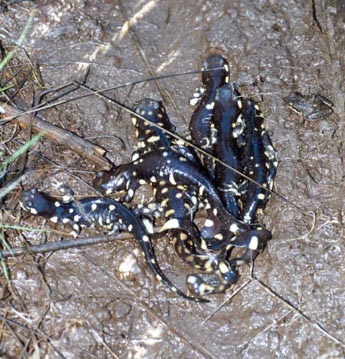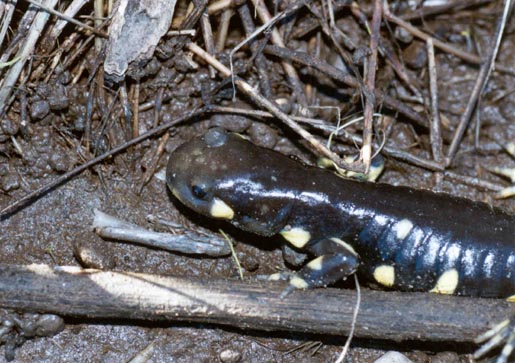These
secretive amphibians are seldom seen because their activity takes place
primarily during cool, rainy nights.
On rare occasions, they are seen making their nocturnal journey from grassland burrows to breeding ponds. They hide during the day beneath protecting surface objects.
Upon reaching the ponds, mating takes place and females later attach eggs to submerged vegetation.
On rare occasions, they are seen making their nocturnal journey from grassland burrows to breeding ponds. They hide during the day beneath protecting surface objects.
Upon reaching the ponds, mating takes place and females later attach eggs to submerged vegetation.

The adults often leave the pond shortly after egg-laying has finished.
The eggs hatch in a few weeks into gilled larvae that feed primarily on
aquatic insects.
Sometimes the larval are abundant in these grassland breeding ponds and, if food is abundant, grow rapidly, leaving the ponds as small adults before summer arrives. They spend the summer in grassland burrows, often dug by ground squirrels.
Sometimes the larval are abundant in these grassland breeding ponds and, if food is abundant, grow rapidly, leaving the ponds as small adults before summer arrives. They spend the summer in grassland burrows, often dug by ground squirrels.
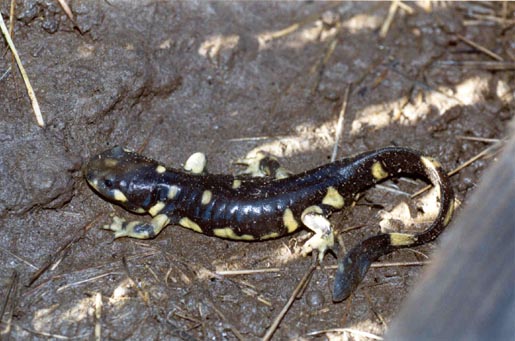
The
future of this species in California is uncertain due to pesticides draining
into breeding ponds, introduced Bullfrogs eating larvae, or the absence
of grassland burrows due to the spread of orchards and vineyards.
Identification: Cream to white spots or bars on a background of black. The broad, rounded snout with small, protruding eyes characterize larvae as well as adults. Total length: 8.5 inches.
Source: "Sierra Reptiles & Amphibians" by Harold E. Basey
Identification: Cream to white spots or bars on a background of black. The broad, rounded snout with small, protruding eyes characterize larvae as well as adults. Total length: 8.5 inches.
Source: "Sierra Reptiles & Amphibians" by Harold E. Basey
